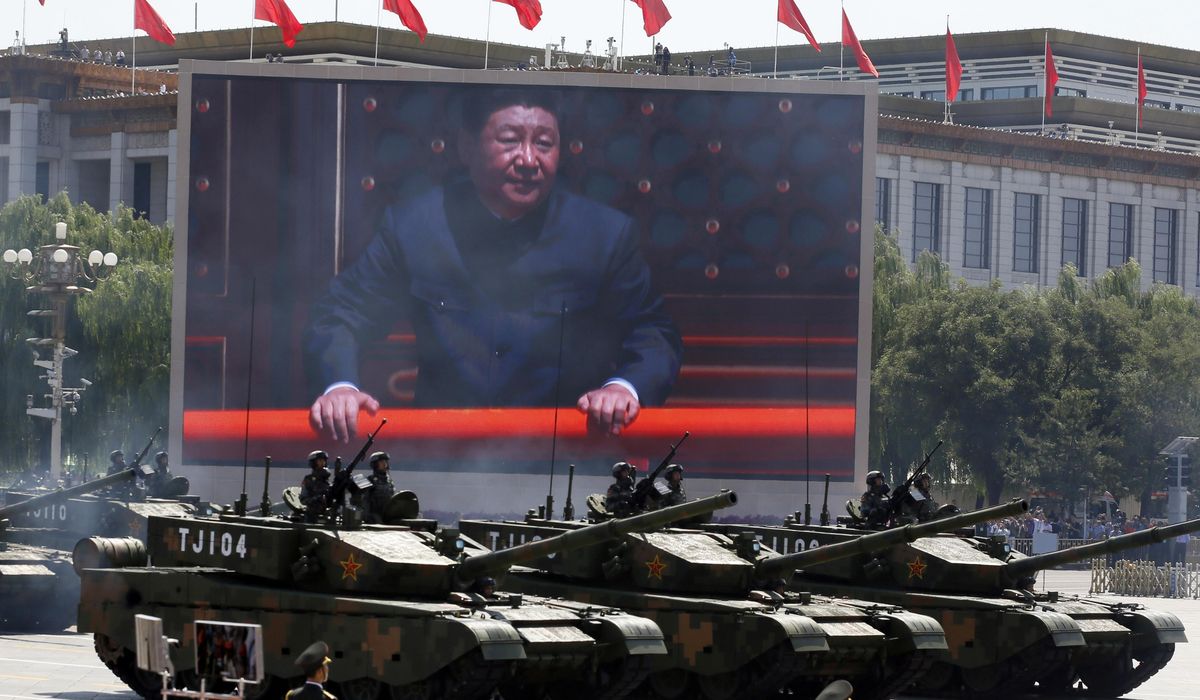


The unprecedented long-range bombing strike by the U.S. on Iran’s nuclear plants, including sending decoy B-2 bombers to Guam, had the secondary impact of bolstering deterrence against a Chinese attack on Taiwan, China affairs analysts say.
Air Force Gen. Dan Caine, chairman of the Joint Chiefs of Staff, said the military operation launched Friday included sending decoy warplanes toward the Pacific to maintain “tactical surprise” for the Iran attacks.
Knowledge of the deception was limited to an extremely small number of war planners and key leaders in Washington and Tampa, Florida, headquarters of the U.S. Central Command, the chairman said.
The mission also produced another strategic effect — sending a warning to China that it faces similar bombing strikes if President Xi Jinping orders his forces to attack Taiwan in the coming months, as U.S. military leaders are warning.
Mr. Xi has ordered the People’s Liberation Army to be ready for a military takeover of Taiwan by 2027.
Miles Yu, a former State Department policy planner on China, said the bomber decoys fooled the Iranians and also served as a “brilliant deterrence operation.”
The regional bomber deployment could serve as a check on the Chinese Communist Party as well as North Korea — both Iranian allies.
Mr. Yu, a professor of Chinese military history at the Naval Academy, said the operation will go down in history as a textbook example of operational planning and execution, perhaps the best since Napoleon’s tactical masterpiece in 1805 victory at the battle of Austerlitz in central Europe.
“This operation also served as stern warning to the CCP as to what the American military is capable of, especially our ability to outsmart, outplan, out-coordinate and overpower any adversary in a long-distant global conflict, whether it’s half a world away in Tehran or over the Taiwan Strait,” Mr. Yu said.
The decoy bombers were reported by online flight trackers who disclosed that two B-2s took off from Whiteman Air Force Base, Missouri, early Friday headed for Anderson Air Force Base, Guam, along with two KC-135 refueling tankers.
Meanwhile, the main formation of seven stealth bombers carrying GBU-57 massive ordnance penetrators was not tracked from Whiteman to Iran around the same time or disclosed online.
On the decoy bombers, Gen. Caine, the chairman, said the planes “proceeded quietly” – suggesting their aircraft transponders were turned off to avoid detection and commercial tracking.
Two nuclear sites were attacked and damaged by 14 of the new 30,000-pound bombs. Around the same time, 24 Tomahawk land-attack cruise missiles were fired from a cruise-missile submarine at a third nuclear site.
Military sources said both the use of GBU-57s and Tomahawks reduced important weapons stocks potentially needed for a future China conflict.
China is known to have extensive underground facilities hardened against attack, including the buried Central Military Commission command center located west of Beijing.
The bombing raid on Iran with the new GBU-57s signaled China’s military that its underground facilities are vulnerable to U.S. strikes.
Overall, despite the depletion of weapons, analysts say a threat linked to China has been substantially weakened and embarrassed with both China and Russia failing to defend Tehran.
That combination has fortified deterrence of China, considered a major nation-state threat for future war.
Retired Navy Capt. Jim Fanell, a former Pacific Fleet intelligence chief, said sending bombers to Guam while the main strike force headed to Iran was a brilliant move.
“Not only did it deceive the ‘open source’ intelligence community and provide operational security, but it was also a very important signal that the [People’s Republic of China] does not have any ‘ownership’ of the western Pacific, and that America is still the most dominant military force in the world,” Capt. Fanell said.
The Iran strike and the B-2 bomber decoy introduce real strategic doubt in the minds of Mr. Xi and the CCP’s Central Military Commission, he said.
Before the B-2 attack on Iran, the CCP had been influenced by successive American administrations appeasing China for some 40 years, Capt. Fanell said.
“Trump has given another hammer blow to Xi’s assumption that he would have a free hand in attacking Taiwan,” he said.
Capt. Fanell said the raid imposes clear deterrent effects on China. But that much more needs to be done to convince the Chinese leader that any invasion of Taiwan would be a catastrophic mistake.
“For now, President Trump has, at a minimum, introduced real doubt into the CCP’s decision-making process, he said.
• Bill Gertz can be reached at bgertz@washingtontimes.com.
